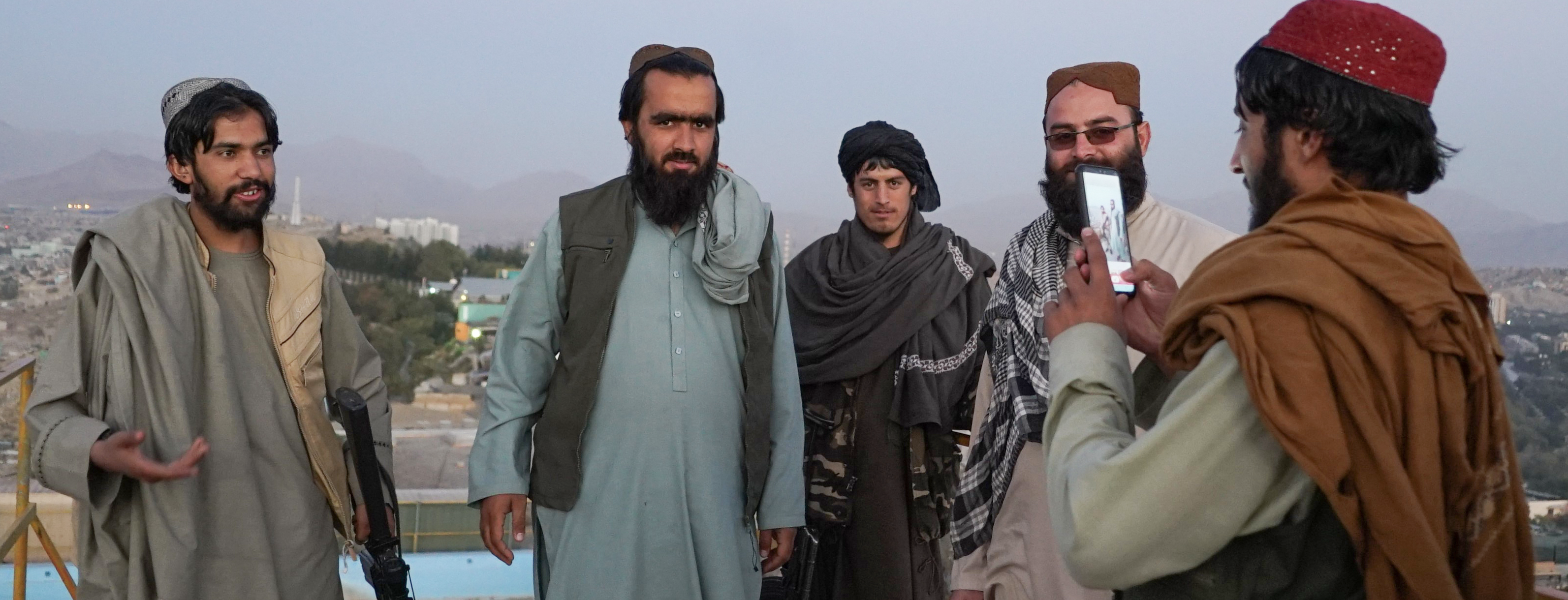
BANNER: Taliban fighters pose on the hill of Wazir Akbar Khan, Kabul, October 12, 2021. (Source: Reuters/Alexandra Kovalskaya/TASS)
Editor’s note: This article includes graphic descriptions and links to graphic imagery. Images of bodies within the article have been blurred.
The Taliban has returned to its previous practice of publicly displaying the bodies of those it has executed, despite promises of a kinder, more benevolent rule for this second iteration of Taliban rule.
Over the two decades of the US-facilitated Afghan government, the Taliban — formerly resistant to strategic public relations and messaging — evolved its approach to both the Afghan public and the international audience observing events in the country. As a part of this messaging, it promised to be more tolerant should it retake the levers of power. Following its recapture of the Afghan government, however, emerging evidence has shown that this new regime is deploying some of the same brutal authoritarian tactics as the prior one.
Afghanistan has been in the hands of Taliban for over a month now, and human rights violations continue to be documented. Destruction of cultural heritage sites, a clampdown on women’s rights, amputations, and violence targeting political opponents have all been reported. Allegations of brutal behavior were dismissed by the Taliban’s head of prisons, who proclaimed, “Cutting off of hands is very necessary for security.”
Now, newly surfaced photos and videos demonstrate how the Taliban has also brought back public display of the executed, a practice implemented under its interpretation of Sharia law.
Displaying execution victims
The return of executions to Afghanistan was feared as soon as the Taliban retook control of the country on August 15, 2021. Reports surfaced in late September quoting Mullah Nooruddin Turabi, the former head of Taliban’s religious police who is now in charge of the country’s prison system, as stating that the executions and amputations would continue as it hand under their previous rule. Turabi dismissed public outrage by indicating the Taliban will continue to implement the laws as they see fit.
During their previous period of rule in the 1990’s, the Taliban used brutal punishment in accordance with the group’s radical ideology as a means of controlling the population. These hardline punishments varied depending on the crime committed. For example, petty thieves were often paraded handcuffed with their faces painted or with stale bread stuffed in their mouths. More serious crimes could result in limb amputation, as well as public stoning and other forms execution.
The DFRLab previously reported on misinformation that surfaced on social media in early September 2021 claiming that the Taliban had hanged a person using an airborne UH-60 Blackhawk helicopter. Upon closer examination, the man was alive and waving, and he likely was putting a Taliban flag on the Blackhawk. By mid-September, however, the first credible footage of publicly hanged individuals started to surface online. Currently available open-source evidence showed that the public displays took place in Western Afghanistan, in the town of Obe and in the city of Herat, both in the Herat Province, where the bodies were paraded as a warning to the public of the consequences of potentially criminal activity.
The city of Herat
Photos and videos of hanged men in Herat started appearing online as early as September 25. According to the reports, four men were hanged in Herat for allegedly kidnapping a man and his son (according to the Taliban district police) and for allegedly injuring Taliban members during the rescue operation. The report also mentioned that the bodies of the men were brought to the square in trucks and then hanged from cranes for the public to see as an “alert to all criminals.” The DFRLab geolocated the available photos and videos to confirm these men were displayed in Herat.
The first two bodies were filmed hanging from a crane next to a unique looking roundabout, which helped to determine the location. Geolocation suggested that the bodies were displayed in the city’s central square, next to the Chowk-e-Golha roundabout

A third body was also hanged from a crane in another square in Herat. A unique sculpture in the middle of square was visible in photos, which facilitated the geolocation process. Additionally, a white “Hilton Tower” was visible in the background.
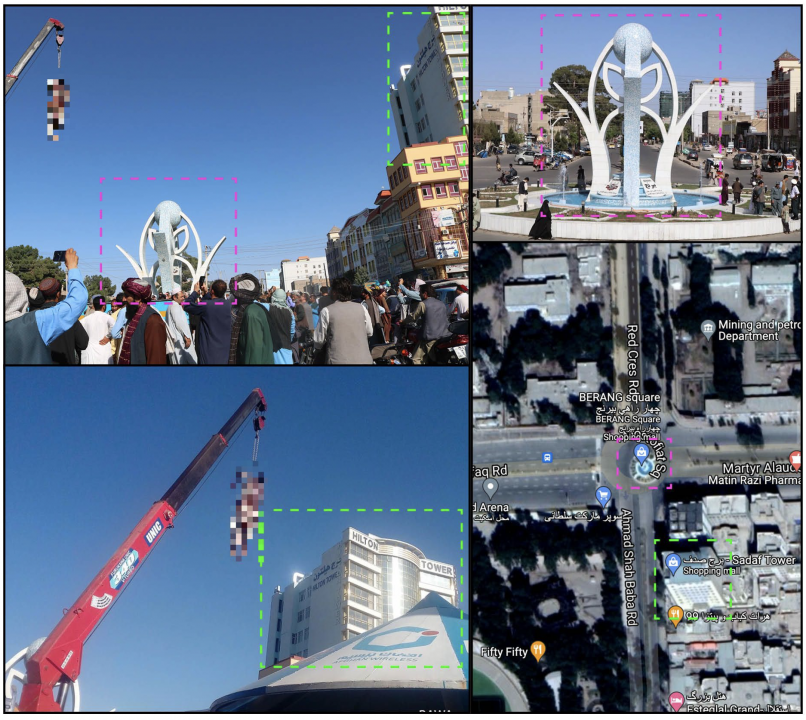
Both of these locations with displayed bodies were geolocated to be in the center of Herat along Martyr Alauddin Khan Boulevard.

Obe Village
Three additional bodies were reported to be displayed by hanging in the town of Obe (or “Awbeh”), around 90 kilometers east of Herat.
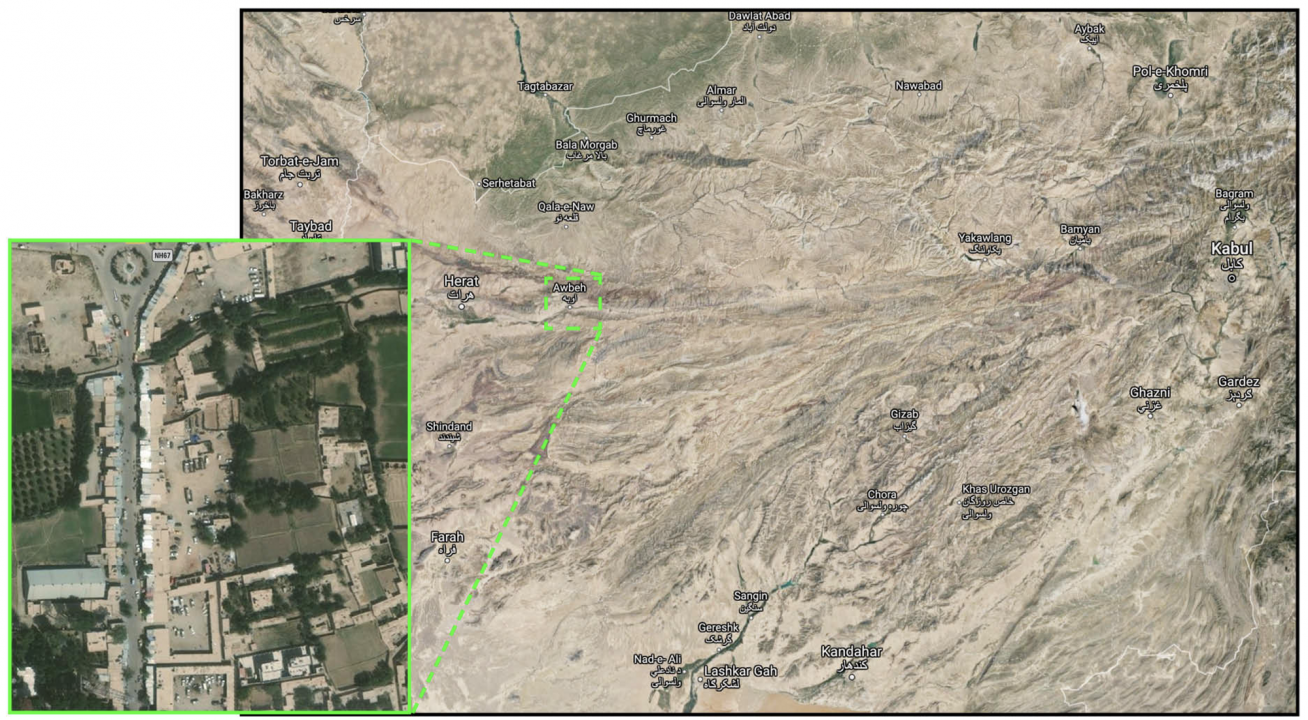
The first photos and videos of these publicly displayed bodies started appearing online as early as October 5.
These three men allegedly tried to break into the home of Herat Deputy Governor Mawlawi Shir Ahmad Muhajir. The men were said to have been shot while committing the crime and then paraded in the town of Obe as a “warning to the other criminals.”
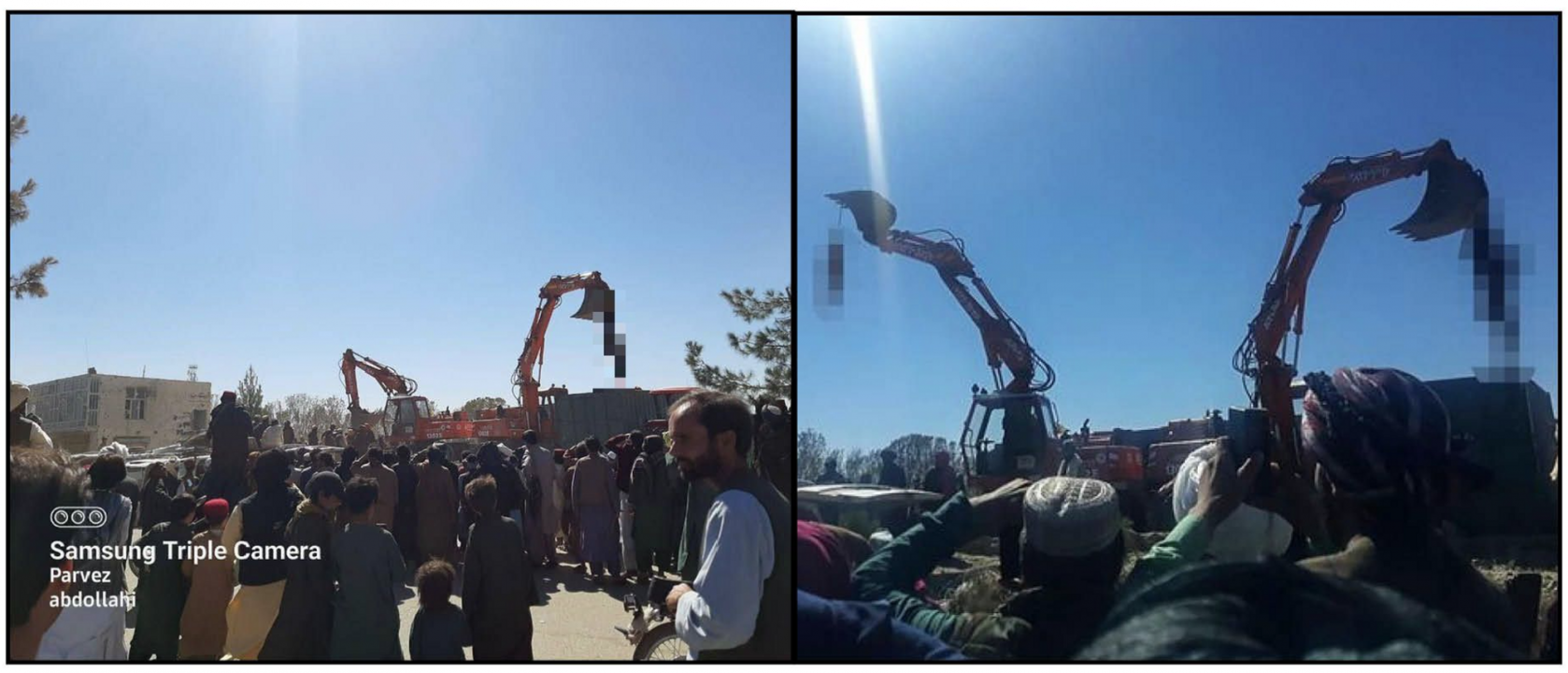
Some of the posts gave a more unspecified location, stating that it was in “Herat” but not clarifying whether the reference was to the city of Herat or the Herat Province.
A geolocation of these photos confirmed the location to be in Obe. The network tower visible in the background of one of the photos allowed the DFRLab to confirm the location, indicating the bodies to have been hung at a roundabout in the north of the town.
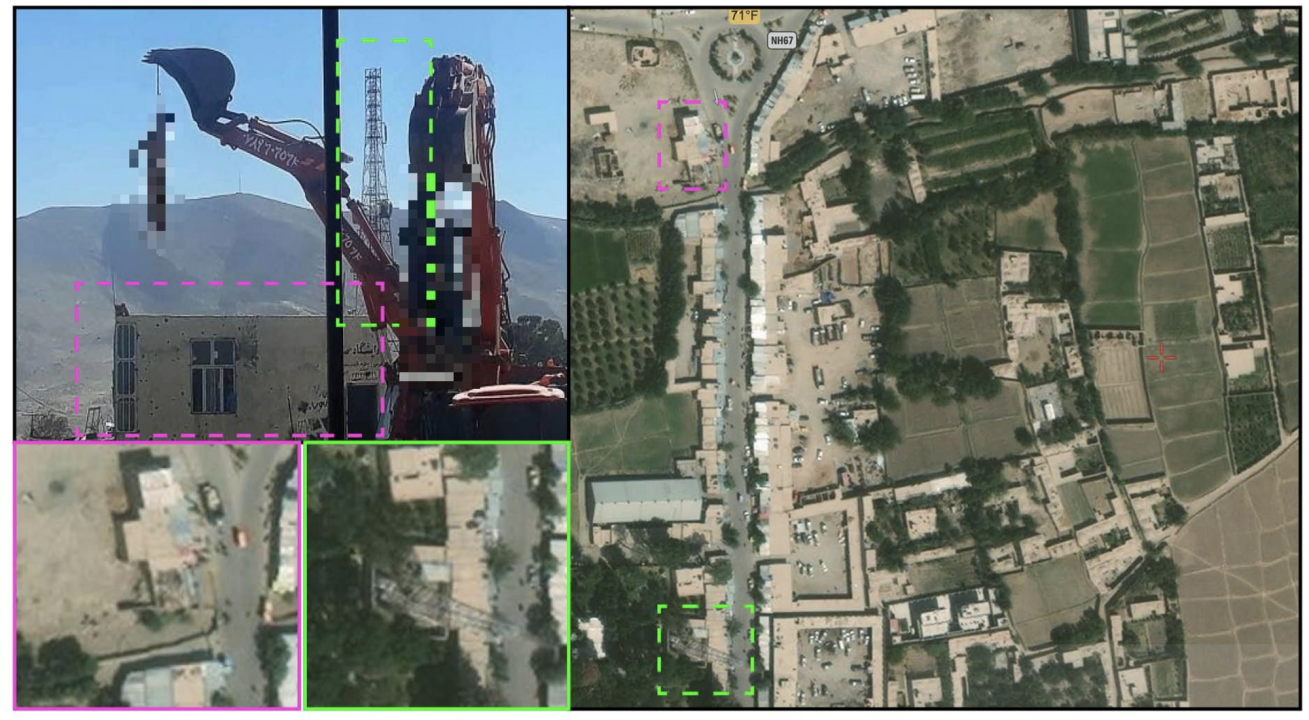
While the world turns its attention away from Afghanistan, stories reporting on the Taliban’s human rights violations are critical to both document these atrocities and return public focus on the country. According to public statements from Taliban officials and available open-source media, it seems that public executions are likely returning Afghanistan, with few signs that these practices will cease any time soon.
Cite this case study:
Lukas Andriukaitis, “Taliban resumes practice of publicly displaying execution victims,” Digital Forensic Research Lab (DFRLab), October 18, 2021, https://medium.com/dfrlab/taliban-resumes-practice-of-publicly-displaying-execution-victims-85f35e78aadc.

